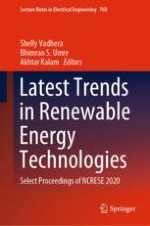This book presents select proceedings of the National Conference on Renewable Energy and Sustainable Environment (NCRESE 2020) and examines a range of reliable energy-efficient harvesting technologies, their applications and utilization of available alternate energy resources. The topics covered include alternate energy technologies, smart grid topologies and their relevant issues, solar thermal and bio-energy systems, electric vehicles and energy storage systems and its control issues. The book also discusses various properties and performance attributes of advance renewable energy techniques and impact on environmental sustainability. The book will be useful for researchers and professionals working in the areas of energy and sustainable environment and the allied fields.
